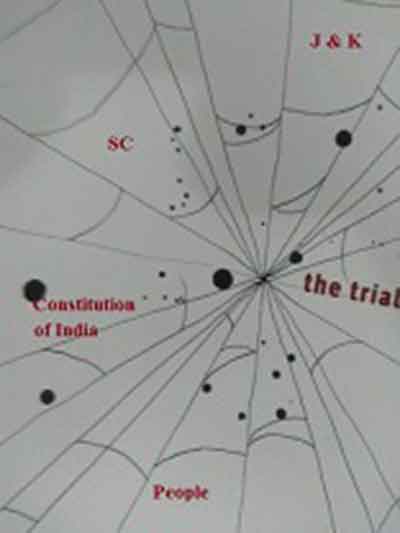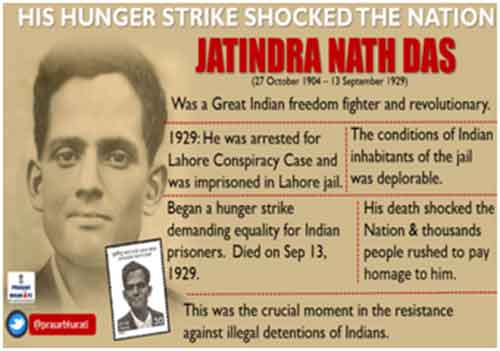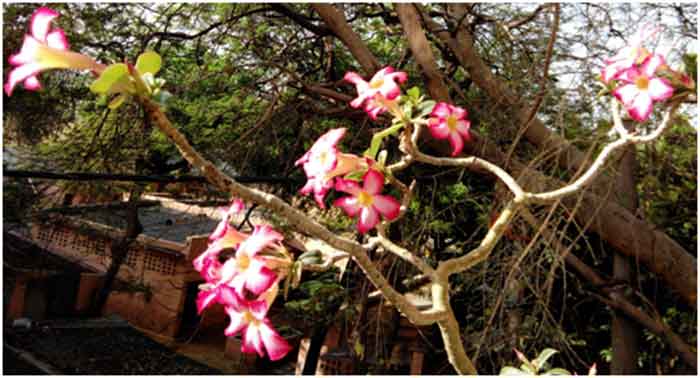One year has passed since the right wing Hindutva forces in power at the centre – which thrives on ruling by shock and awe – betrayed the people of Kashmir. In the aftermath of the events on 5 August, 2019 and with the entire valley locked up and all the leaders arrested (many are still under detention) the only hope left at that time was from the judiciary. Soon many petitions were filed in the Supreme Court (SC) which inter alia included several habeas corpus petitions, challenge to curbs on media freedom as well as challenge to the constitutionality of the Presidential Orders C.O. 272 & C.O. 273 (POs) and The Jammu and Kashmir (Reorganisation) Act of 2019 (the 2019 Act).
Justice so far has eluded the people of Kashmir with the courts and other statutory bodies working in tandem with the Central Govt. The judiciary is openly and without pretence deferring to the wisdom of the executive. Supreme Court has delved in detail on diverse issues relating to fundamental rights, media curbs etc in its orders without giving any tangible relief to the people of Kashmir. The near total alienation of the people of Kashmir has been lost sight of.
Beyond Kafkaesque-ism
In the cases relating to the freedom of the press three judges of the SC passed a 130-paged judgement on 10 January, 2020. The judgement was passed after the publication of newspapers had resumed and only lays down future guidelines. The SC could not even get the government to produce all the orders passed curbing the freedom of the press. Even though it held that the government’s stated “difficulty in producing all the orders before this Court … is not a valid ground to refuse production of orders before the Court”. It did not castigate the government on non-production of orders thus allowing it to erode the authority of the SC. The presumption when the documents are not produced before a court is the non-existence of such documents. But the SC does not presume it because if it did then the inevitable conclusion would follow that verbal orders were being given by those in authority to put curbs on the fundamental rights of the people of J & K in violation of all laws. The government was saved this embarrassment. The SC held:
“As all the orders have not been placed before this Court and there is no clarity as to which orders are in operation and which have already been withdrawn, as well as the apprehension raised in relation to the possibility of public order situations, we have accordingly moulded the relief in the operative portion.”
In Kafka’s ‘The Trial’ Josef K., protagonist never gets to see the charges framed against him even up to the point of being executed! In the Kashmir petition – forget the petitioners – even the judges never got to see all the orders of the government about which the judgement was passed!! In good old days (2014 to 2019) Union of India used to hand over ‘relevant’ information to judges in sealed cover; that era is now passé!!!
The continuation of 4G mobile internet ban in Jammu and Kashmir (J & K) illustrates the academic nature of the 10 January, 2020 judgement. Even now the SC is not willing to adjudicate the issue and as per the submissions made by the government in SC a special committee comprising of the chief secretary of the J & K administration, Union home secretary and secretary, Department of Telecommunications, Government of India has decided against restoration of 4G mobile internet in J & K. Can the SC delegate its judicial powers to a committee of bureaucrats? It is complete abdication of its Constitutional duty.
PIL furthering the Hindutva agenda
Between 2014 and 2018 about nine petitions were filed in the SC challenging variously Articles 370 and 35-A and special status accorded to J & K then. All these petitions filed as public interest litigation were listed in SC about thirty times between August 2014 and February 2019. Needless to say that these petitions furthered the Central Government’s agenda on J & K. One such petition was initially filed in the High Court of Delhi by a then recent law graduate with her lawyer-father arguing the petition. Mercifully the Delhi High Court dismissed the petition on 11 April, 2017. But lo and behold SC admitted the appeal against the Delhi High Court order. I attended one of the hearings in the said case in the Delhi High Court. Looking at the young women petitioner I had wondered if she has any idea whatsoever about the aspirations of the people of Kashmir? What right does she have to file such a petition? How can the constitutionality of Article 370 be challenged in a PIL? But unfortunately SC did not raise any of these fundamental questions and all these petitions filed before the events of 5 August, 2019 have now been clubbed together with the petitions challenging the constitutionality of the POs & the 2019 Act.
[For details of the petitioners/orders visit SC’s website and see case status in Writ Petition (Civil) No. 1099 of 2019 titled Dr. Shah Faesal & Others Versus Union of India & Another]
Law on habeas corpus turned upside down
The law in habeas corpus requires the person under detention to be produced before the court or a judge. But the SC attuned the relief to suit the government. Instead of ordering the government to produce the detenue in court, petitioners in some cases were directed to visit the detenue in Kashmir with the proviso that they will not indulge in any other (political) activity. The J & K High Court became de facto nonfunctional. In June 2020, J & K High Court Bar Association, Srinagar wrote to the Chief Justice of India that since August 6, 2019 more than 600 habeas corpus petitions have been filed before the High Court of J & K at Srinagar; however till date, not even 1% of such cases have been decided.
Turn the clock back …
On 02 March, 2020 a five judge Constitution bench of the SC decided that it need not refer to a larger bench the petitions challenging the constitutionality of the POs & the 2019 Act. Earlier on 1 October, 2019 the SC declined to stop the Centre from carving out two centrally-administered union territories out of Jammu and Kashmir orally saying that it could always “turn the clock back”. A reasoned written order declining stay on the 2019 Act which came into effect on 31 October, 2019 was never passed – effectively preempting its challenge! There is no clarity on when the petitions will now be listed for arguments!!
(but) … within the domain of our country
On 29 July, 2020 a three judge bench of the Supreme Court presided over by Justice Sanjay Kishan Kaul allowed conditional release of Mian Abdul Qayoom, President of J & K High Court Bar Association, who had been in jail since August 2019. The release order does not examine the “legality and validity of the impugned judgments” of the High Court of J & K denying him bail! The order was passed after the government agreed to release him on certain conditions. Be that as it may, more alarming is the obiter dicta in the order which states:
“Before we part with the matter, we must say that Kashmir has been a troubled area. Nature has been very kind to the place. It is the human race which has been unkind. It is time for all wounds to be healed and look to the future within the domain of our country. We are sure that the petitioner will also adopt a more constructive approach to the future and the Government will consider how to bring complete normalcy at the earliest.”
The use of the phrase “within the domain of our country” in the above order has several very troubling connotations viz:
- Complete identification of the Supreme Court judges with the Central Government;
- “Our” could also be used like ‘us and them’, ‘ours and theirs’, ‘Indians and Kashmiris’;
- It shows pre-existing bias in the mind of the SC judges who passed the said order.
There was no reason for this obiter dicta to form part of the order for release of Mian Abdul Qayoom. However now that it has been done Justice Sanjay Kishan Kaul – who is also part of the five judge bench hearing the challenge to the POs & the 2019 Act – must recuse himself from hearing the said petitions as the fact that his mind is made up on the issue is no longer a secret. It is possible that other four judges on the bench also feel the same way but at least let there be a seemingly just hearing. After all justice should not only be done, but should manifestly and undoubtedly be seen to be done.
Epilogue
On 5 August, 2020 PM Modi will lay the foundation stone of Ram temple in Ayodhya. Adherents of the Hindutva ideology are working overtime to brand 5 August as a Hindutva day.
Shobha Aggarwal is a Delhi based rights activist and lawyer.
Email: pilwatchgroup@gmail.com









